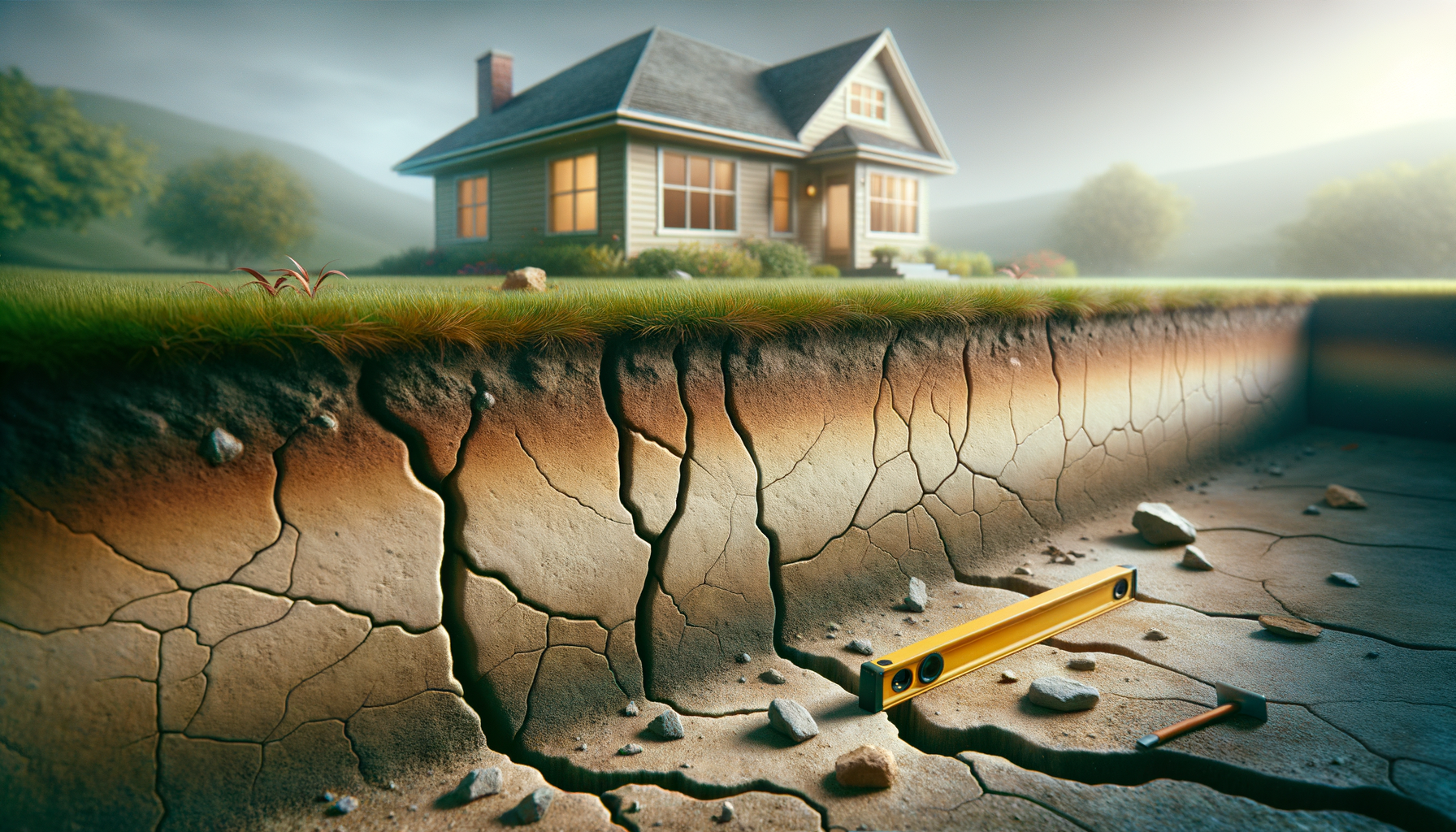Understanding Sinking Foundations
What is a Sinking Foundation?
A sinking foundation happens when the ground below a building starts to give way, making the building sink unevenly. This can happen because of several reasons:
- Soil Erosion: Heavy rain can wash away the soil that supports the foundation.
- Poor Compaction: If the soil wasn’t packed down properly during construction, it can settle over time.
- Hydrostatic Pressure: Water pressure can push against the foundation walls, causing them to crack or collapse.
- Shrinking and Expanding Soil: Clay soil can get bigger when wet and smaller when dry, making the ground move.
Common signs of a sinking foundation include:
- Cracks in Walls and Floors: Look for cracks that look like stairs in brick walls or horizontal cracks in the basement.
- Uneven Floors: Floors that slope or bounce are signs of trouble.
- Sticking Doors and Windows: If doors and windows are hard to open or close, it might mean you have foundation issues.
Why Sinking Foundations are a Problem
A sinking foundation is more than just an annoyance:
- Structural Risks: It can make your home unsafe by weakening its structure.
- Property Value: A home with foundation problems loses value and becomes harder to sell.
How to Identify a Sinking Foundation
Visual Clues to Watch For
Be on the lookout for these warning signs:
- Cracks in Basement Walls or Floors: Vertical or diagonal cracks are common.
- Gaps Around Windows and Doors: Changes in frames can show ground movement.
- Sloped Floors: Use a marble or ball to see if it rolls without stopping.
Tools and Tests You Can Use
- Level or Laser Level: Check different points in a room to see if they’re uneven.
- Water Test for Floor Slope: Pour water on the floor and see if it always flows to one corner.
When to Call a Professional
Call a professional if:
- Problems Don’t Go Away: If the same issues keep coming back, you need an expert.
- You See Many Warning Signs: Multiple symptoms often mean a big problem.
- Expert Advice: Professionals can give you an accurate diagnosis and a solid repair plan.
Finding Sinking Foundation Repair Near You
Local Search Tips
- Online Resources: Use websites like Google, Yelp, or Angie’s List.
- Ask Around: Talk to neighbors or local groups for their recommendations.
Checking Credentials and Reviews
- Certifications: Make sure the contractor is licensed, insured, and accredited by groups like the BBB.
- Read Reviews: Look for positive feedback and resolved complaints.
Evaluating Multiple Options
- Compare Quotes: Get several quotes to understand the price range.
- Questions to Ask:
- How much experience they have
- What warranty they offer
- How long the repairs will take
Common Sinking Foundation Repair Methods
Underpinning
- Process: This method involves extending the foundation down to deeper, stable soil.
- Best For: Severe sinking problems needing more depth.
Slabjacking (Mudjacking)
- How It Works: It involves pumping a slurry mix beneath the foundation to lift it.
- Pros and Cons:
- Pros: Cost-effective and quick.
- Cons: Not suitable for major issues or all types of soil.
Helical Piers and Push Piers
- Installation Process: Piers are driven deep into stable soil layers.
- Advantages: Very effective for serious foundation issues and very durable.
Cost Considerations
Average Costs for Different Methods
- Underpinning: $1,000 – $3,000 per pier.
- Slabjacking: $500 – $1,500.
- Helical Piers and Push Piers: $1,300 – $2,500 per pier.
Factors Affecting Repair Costs
- Extent of Damage: More damage means higher costs.
- Soil Conditions: Difficult soil can make repairs more expensive.
- Accessibility: Hard-to-reach areas cost more to repair.
Financing and Insurance Options
- Payment Plans: Some companies offer financing to help spread out the cost.
- Homeowner’s Insurance: Check if your policy covers foundation repairs.
Maintenance Tips Post-Repair
Preventing Future Issues
- Proper Drainage: Make sure water drains away from the foundation.
- Regular Inspections: Routine checks can catch problems early.
Landscaping Tips
- Avoid Large Trees: Large tree roots can disturb the foundation.
- Proper Slope: Make sure the ground slopes away from your house to direct water runoff.
Foundation Health Monitoring
- Use Technology: Monitoring tools and apps can help track changes in the foundation.
- Get Professional Help: Schedule regular check-ups with a pro.
Resources and Contact Information
Local Foundation Repair Companies
Here are some recommended local repair companies:
- Company A: [Contact Details]
- Company B: [Contact Details]
- Company C: [Contact Details]
Useful Links for Homeowners
- Homeowners’ Forum: [URL]
- Educational Websites: [URL]
Encouraging Regular Inspections
Benefits of Proactive Maintenance
- Save Money: Early fixes cost less than major repairs.
- Home Safety: Regular maintenance keeps your home safe and sound.
By staying informed and proactive, you can protect your investment and keep your home safe and comfortable.


Leave a Reply